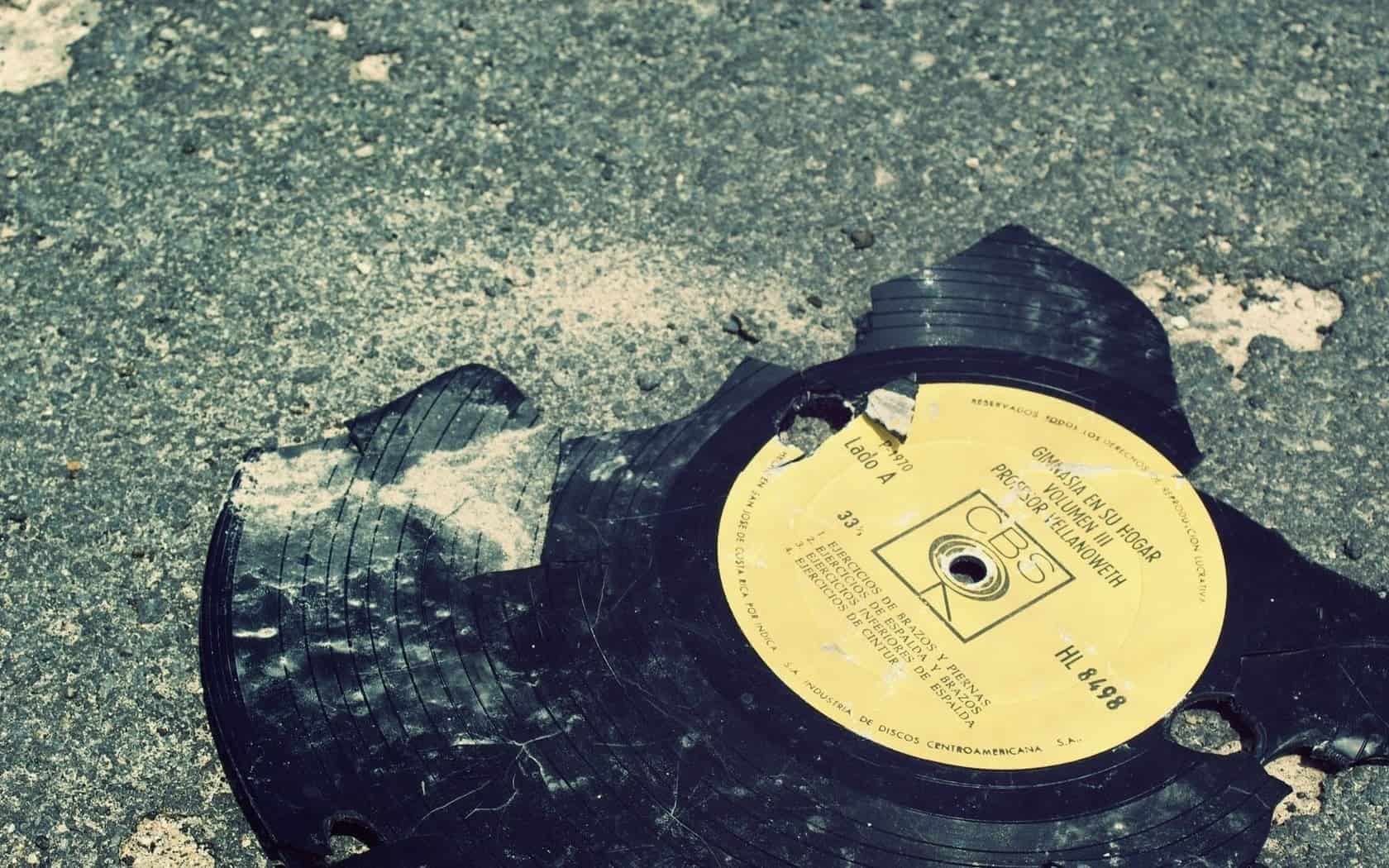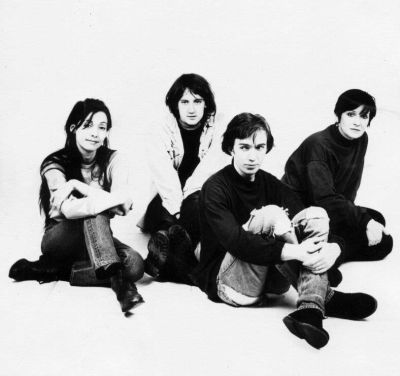Welcome back to the coliseum of musical divisiveness one and all! In part one of this article series, I set out my stall for the mission at hand. That is, to tell you all about some albums I really like, despite their numerous flaws. In other words, classic examples of guilty pleasures. So, let us plough on into the 21st century, my music fan credibility firmly at stake, and see what potentially questionable opinions I might divulge.

Shaun Ryder – Amateur Night in the Big Top (2003)
Picture the scene: it’s 2001. Shaun Ryder has just come off a shambolic tour with the Happy Mondays, his drug use at an arguable peak, legal troubles underway, and so he takes the decision to go cold turkey at his cousin Pete Carroll’s house in Australia. While at that point he said he was done with music, one day, he overheard some music Pete was playing round with, and his interest was reignited. Then, after some ad-hoc recording sessions, and some help from Shane Norton and Cabaret Voltaire’s Stephen Mallinder, ‘Amateur Night…’ was eventually introduced to the world in July 2003.
One major drawback to the album that becomes immediately obvious is its length. An hour isn’t an exorbitant length of time, no, but when you realise that all eight songs are at least five minutes, a couple even breaching 8-9, it starts to feel like quite a long hour. Reason being that, while the ideas it presents musically are cool, I’d hazard they could easily explore all those same ideas in two thirds of the time, many of the structures based around near incessant repetition despite addition of musical layers.
This problem is even more pronounced with Ryder’s vocals and lyrics. Shaun himself later said that at the time he was “too frazzled to even get anything from my frazzle”, and so the decision was made that Ryder would instead recount a number of his life stories, or other various spontaneous fictional tales, in spoken word form, occasionally popping into deliver a refrain.
Sounds like a decent idea. Problem is, much like the music, his repetition of some of these refrains or phrases can get a bit irritating once you’ve heard them 40 times. Not to mention that while he can be compelling in spots here, there may be times you find yourself willing Ryder to just be more present, more together, when you know he isn’t all there, something that a number of vocoders or robot effects can’t really mask.
Putting all that to one side though, as rag-tag as its lineup may seem, this album has some real, serious strong points, making it, I think, an underappreciated gem in the Ryder discography. Firstly, structure aside, a lot of the music on here is unlike anything I’d really heard before, while still feeling so familiar at the same time.
Pete, Shane and Stephen masterfully pull together influences from dance, hip-hop, pop, dub, and world music into the gnarliest of musical soups, acting as the perfect backdrop for Ryder’s tales of debauchery. From the raga tinged electro hip-hop on The Story’, to the constantly frenetic, choppy jungle beats on ‘Monster’, or what I can only describe as “rave and garage deluxe” on ‘Scooter Girl’ and ‘Shapeshifter’ respectively. The album’s sonic palette is bombastic, colourful, punchy, and completely whacked out, definitely a help with its expansive run time.
Equally, even with my previous critiques, there are numerous moments where Ryder really shines here, showing that even at his most discombobulated, he can still be a very compelling presence. What helps the most for my money is that Ryder, at a number of points on this album, really sounds like he’s having a lot of fun, letting the listener in on it with him. Whether it’s an oddly cartoonish and chaotic retelling of an international flight on the opener, or a lambasting of strange phobias on ‘Clowns’, it’s Shaun’s zany delivery and acid flecked imagery that makes them so compelling. In addition, plainly, it shows that Ryder really does have power as a storyteller.
Even though he might not exactly be William Wordsworth, his story of introducing ecstasy to the military on the closer is really great, not only with the great reggae instrumental, but Ryder’s vivid narration, blunt and unfiltered language, and comedic tinge make it a real standout. There’s also ‘Murder’, which sees Ryder at his most straightforward, well structured and “musically inclined” of the whole album, maintaining his oddball appeal, which, backed by a really cool, woozy bit of electronic psychedelia, just makes for a great song full stop.
So this album might not exactly be a classic in his discography, but in the same breath, it’s criminal how few people know about it, given you see Shaun at his most unfiltered, off-the-wall, and arguably his most original.
Fatboy Slim – Palookaville (2004)
By 2004, Big Beat was no longer the dominant cultural force it once was, with its most prominent acts like The Prodigy, The Chemical Brothers and Apollo 440 having released their best material years prior. It seems like Norman Cook was also feeling the pressure. His previous album ‘Halfway Between The Gutter and the Stars’ hadn’t performed nearly as well as his breakout, and it seemed like he was starting to get backed into a sonic wall of sorts. So, with ‘Palookaville’ in 2004, he saw fit to widen his re-mit a little bit. In some areas I’m thankful, in others, not so much.
The word I would use to maybe describe the album is “confusing”, because for those Fatboy megafans looking for more big beat madness, tunes of that specific variety are pretty thin on the ground. Probably the one true blue stab comes with the interpolation of Babatunde Olatunji’s ‘Jin Go Lo Ba’, a barrage of African rhythms, kooky bass and DJ scratches sure to whip any dancefloor into a frenzy.
Elsewhere though, Norman’s attempts to rekindle that classic energy tend to fall a bit flat, whether it’s the somewhat half-baked summer jam on the opener that basically feels a bit like a “big-beat checklist” exercise, just without the lustre, ‘Slash Dot Dash’, whose surf guitar and incessant vocals are just quite annoying, or the slightly bluesy ‘El Bebe Masiquisto’, which I can’t imagine sounds too dissimilar to the demo track for a royalty free “How To Fatboy Slim” sample pack. It just sounds quite cheap.
Additionally, for the most part I can appreciate Norman wanting to switch it up, but there’s the occasional moment where he screws the pooch a little bit. Take the Bootsy Collins vocal cover of ‘The Joker’, that, while vaguely pleasant, just comes across like the definition of filler, and the odd high pitched vocal samples don’t help. Particularly tedious though is ‘The Journey’ with Lateef, which despite having a decent vocal performance, is so slow-paced, repetitive and boring it’s almost mind-numbing.
For the most part however, while none of the tracks on the album have the immediate, explosive power of previous hits, what we get instead is a fairly consistent, and actually pretty interesting sonic detour. As mentioned previously, Norman saw fit to mostly do away with the bleepy synths, breakbeats and colourful samples, instead opting to deliver onto us what is essentially an album of hip-hop-ified acoustic campfire jams, which actually, more often than not has some pretty cool results.
For one, Lateef’s initial offering ‘Wonderful Night’ is a lot of fun, pairing up punchy, propulsive drums, textural percussion and super funky bass, along with his very exuberant delivery, to create a track that is a pretty nice, carefree, happy party song. ‘Long Way From Home’ has a bit more of a trippy, psyche edge, combining chopped up, glitchy drum samples and anthemic guitar lines, giving us a track that wouldn’t sound out of place as a quality Gorillaz B-side.
Speaking of Gorillaz, Damon Albarn also lends his vocals to ‘Put It Back Together’, which rather than being exuberant, fast-paced and poppy, instead opts for a more reserved, head bobbing, downtempo singalong vibe, which actually goes down fairly well as a chill little breather. Incidentally, while he’d certainly not been known for it before, it’s actually some of the album’s slower tracks that see Norman best reap the benefits of the sound change. This is true on the dreamy, romantic, and jazzy ‘North West Three’, or the ornate, soulful, and sunny ‘Song For Chesh’, both personal highlights.
Perhaps the album’s most decisive victory is on ‘Push and Shove’, where the endlessly groovy beats, fuzzy guitars, catchy chorus melodies and great use of backing vocals prove quite obviously that not only can Fatboy adapt well, but he can still party as hard as anyone.
At the end of the day, is it one of his best albums? No, not even close, but those dismissing it simply because it’s “not big beat” are missing out. It may well be an odd bookend to his studio discography, but it’s chock full of charm, its sense of sonic freeness making way for some very nice new ideas, and, as one reviewer rightly ascertained, it gives Cook’s back catalogue some much needed depth.
Limp Bizkit – Gold Cobra (2011)
Limp Bizkit I think are simultaneously the poster boys for, and the laughing stock of, nu-metal in general. They exploded on the scene with huge hits like ‘Nookie’, ‘Break Stuff’ and ‘Rollin’, but beyond ‘Chocolate Starfish…’ in 2000, people just lost interest, not without reason either I might add (I’m looking at you, ‘Results May Vary’). Then, in 2009, every LB fanboy’s dream came true, as Fred, Sam, John and Lethal reunited with original guitarist Wes Borland, the result being the highly underrated ‘Gold Cobra’ two years later.
Now of course, it’s in this article, so naturally it has its issues. The only way I can perhaps describe the main one, is that it REALLY sounds like a Limp Bizkit album made in 2011. While it does irritate me less over time, the use of electronic textures on this album is really on the nose, and can sometimes tend to be quite tacky, especially with its updated “modern” sound, whether you’re talking about the programmed beats on the opening and closing tracks, or the gun sound effect collage at the end of ‘Shotgun.’ They’re definitely moments that make it difficult for me to say the album is exactly timeless.
In addition, like all Limp Bizkit albums, there are tracks that really pale in comparison when compared to the stronger material, like the atmospheric, slightly snivelling ‘Loser’, or ‘Autotunage’ which, while definitely having a sense of fun, sounds more like a studio outtake done for shits and giggles than a proper album track.
Need I mention Fred Durst’s vocals? Granted, his delivery is definitely more competent here, but there are times where the overwhelming sense of “super epic swag white guy” can be hard to stomach, a bit “how do you do fellow kids?” Particularly obvious with lyrics where he tells us he “isn’t a cracker we should fuck with”, or that a serial killer will have us “shitting in our motherfuckin’ underwear.” I want to give you a pass, but come on man.
Even with all that though, I would maybe go as far as to say this is Limp Bizkit’s 2nd best album behind their debut, a bold statement, but I’ll explain. While it may not have the obvious single power of previous releases, the one thing this album is good at is just doing what Limp Bizkit does very well. The album is just chock full of punchy, infectious grooves, mosh (and party) ready guitar riffs, some pretty sick soloing too, along with heaps of rebellious, “fuck you” attitude, with Fred’s vocals even getting uncharacteristically gnarly at a couple points. All this makes it a very fun time.
The title track, ‘Shark Attack’, ‘Get A Life’, ‘90.2.10’, the surprisingly decent power ballad ‘Walking Away’, and in particular ‘Why Try?’ is absolutely thumping. I could go on. In fact, despite my comments earlier, I would say there isn’t a single track I actively dislike, which can not be said for their other albums. That’s another reason why this album works so well: the lack of flab. Even with Limp Bizkit’s best albums, it’s arguable that they’re not in their best form until at least 15-20 minutes of stuff is removed. Whereas here, beside maybe the intro, every track, even those I criticised, feel like they have a place, and means I rarely ever find myself asking ‘why is this here?’, which does a lot more for it than you think.
In short, why this album works is quite simply because it gives you the most pure, undiluted, “lean” and consistent dose of Limp Bizkit you can find in their whole catalogue. That might sound like a nightmare to some, but for me, it’s a real positive.
So, that does it for part two. I never thought I’d find myself defending Limp Bizkit with such vigour, but it is 2024. I suppose anything’s possible. We’re not quite done yet though! In the next (and indeed final) part of this series, I’ll be giving you yet another trio of albums that are perhaps less than enthusiastically received, but also pretty damn good in other ways too. Brace yourselves, because I’ve set myself up to defend one of the most disliked albums in history. Whether I’ll do so adequately, I’m not sure. Wish me luck…





